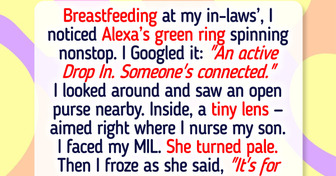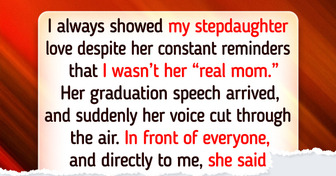My In-Laws Told Me Not to Share a Bed With My Wife—I Am Furious


Many times, puppies raise a paw or seek physical contact through this simple gesture, but there are many meanings behind it. It can range from an obvious expression of affection to a search for reassurance when they feel anxious.
That’s why Bright Side wants to explain 6 possible signs a dog may be giving you every time they touch you with a paw.
In many respects, it’s important to make some clarifications about canine body language, specifically when talking about a gesture that is as common as placing a paw on your body. It’s often thought of as a way of expressing dominance, however, that’s not necessarily so. Many times, the postures and gestures that dogs make are easily misinterpreted, mostly because we tend to approach them as if they were signs of human communication when they’re actually not.
Observing an animal’s behavior is extremely important if you want to know exactly what he or she is trying to communicate. This is especially important if you want to avoid problems such as stress, anxiety, and in the worst case, aggressiveness. A gesture like placing a paw or lifting it on its own can mean many different things. That’s why you should pay attention to the context and other body signals when you’re trying to figure out what the dog is actually trying to tell you.
One of the ways how dogs express their affection is by placing their paws on our legs or any other part of our bodies. They do this simply because they want to be petted — it’s that simple. Lying on their paws is another bodily expression of affection that you should learn to take into consideration when interpreting your pet’s behavior.
In addition to tail wagging, dogs can express joy with other calm behaviors, such as a relaxed ear position, laying on their belly, etc. It is very common to confuse overexcitement with joy since spinning in circles or jumping on the hind legs without stopping are gestures that indicate that the dog has a lot of accumulated energy. The lesson to take away from this is that it’s important to really pay attention to your dog’s behavior as not to mistake it for the wrong thing.
Among the most common behaviors dogs use to socialize with each other, you’ll find examples of submission and dominance. Normally, when a dog that presents itself as submissive wants to let the dominant dog know that they accept their place in the relationship, they lie on their back and may raise a front paw. This can be helpful information to better understand what this action means.
Dogs have different ways of inviting other canines to play with them, and body language is essential in all of those. One of the most important postures dogs use is sometimes known as the “play bow.” Of course, keep in mind that they can use it to call not only other animals but also people.
In addition to these gestures, when playing, dogs may bite, bark, and even growl. All these behaviors can sometimes be misinterpreted by humans as aggression, but they’re actually not. When play becomes too rough, you can clearly notice that dogs change their body posture. They usually become more rigid and move faster without jumping or running in circles.
Physical contact is one of the most important aspects for a dog to maintain a healthy relationship and communicate any issues. In fact, through contact, they may be communicating insecurity or fear, like by placing a paw on us. It’s important to observe their body language to determine this. Lowering the ears and yawning are other common signs of anxiety.
Our furry friends take great pleasure in our company, that’s nothing new. So when we are busy and can’t really pay much attention to them but they still want our undivided attention, they find different ways to let us know they’re not too happy. Of course, one of those ways is by placing a paw on us. This may go together with other common behaviors, such as barking, searching for toys, climbing on furniture, etc.
However, if we see that the dog becomes too demanding or that their attention-seeking behavior escalates to new levels that are no longer healthy, something else might be going on. This might indicate that the dog is bored, which means that they have a lot of pent-up energy and do not have the necessary mental stimulation to occupy themselves with.
Another common message dogs try to convey with this gesture is a very important one: they are hungry. Normally, a dog knows when it is time to eat, so they may ask for food in many different ways. Sometimes, some dogs whine a bit to get your attention, and other times, they put their paw on you. It all depends on what you react better to.
Do you know of any similar behaviors in dogs? Tell us what your dog normally does when they touch you with a paw.











